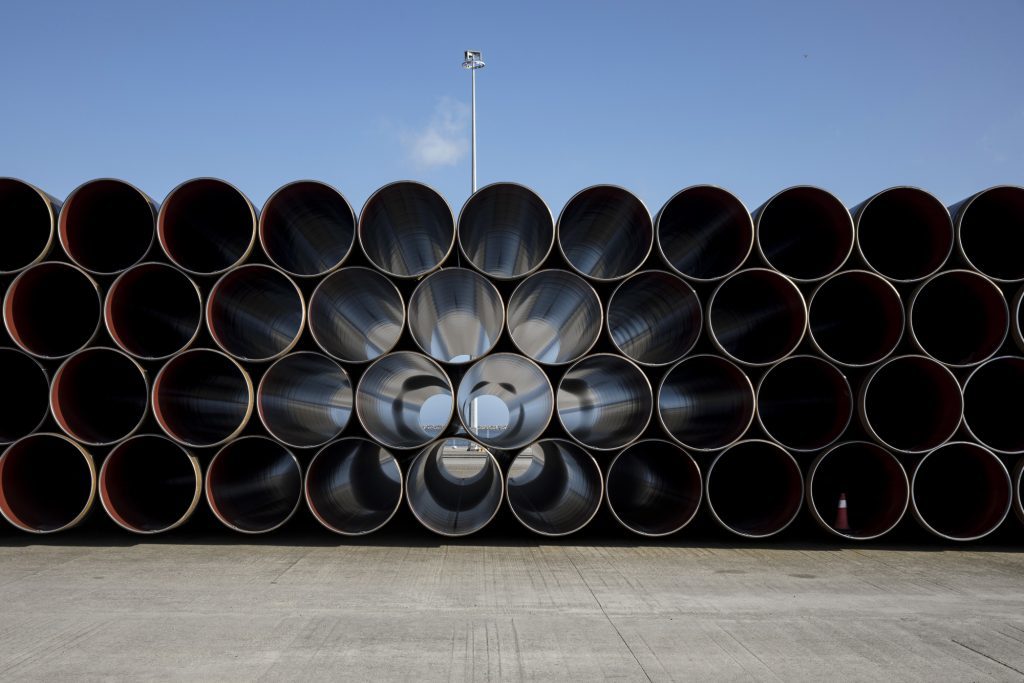
The center of gravity in Europe’s natural gas market is heading south as one of the continent’s biggest pipeline operators builds a system that could make Italy an exporter of the fuel for the first time.
Fortified with new supplies due from a $5.6 billion pipeline link to the Caspian Sea as well as tankers full of gas in its liquid form, Snam SpA and its Chief Executive Officer Marco Alvera are seeking to place Italy at the crossroads of Europe’s gas trade.
If successful, Alvera’s efforts would accelerate the gas market’s shift away from the U.K. and toward the Netherlands and southern Europe. Those areas are absorbing more gas coming from Russia and the south, making up for declining production in Britain’s part of the North Sea. Snam’s network would become more important if Alvera can manage to bring in enough new flows to turn Italy from consumer into an exporter.
“Italy is geographically and geologically very well positioned to act as a hub,” Alvera said in an interview at Bloomberg’s office in Milan. “It is already one of the most diverse natural gas markets in the world.”
Alvera’s effort represents increasing competition that’s picking away at the dominance Britain built up in Europe’s gas market through the 1990s when its output was expanding. With U.K. gas wells in steady decline since 2000, traders are increasingly focused on other natural gas hubs, led by the Netherlands, which also have the advantage of reducing currency risks for those dealing in euros.
The U.K. and the Netherlands are currently neck-and-neck in Europe’s the 720 billion-euro ($900 billion) a year gas market, according to Kingston Energy Consulting. Turnover has been slipping in the U.K. and growing elsewhere.
At the moment, Italy looks like an unlikely place for a gas export hub. So much Russian gas flows into Italy that an explosion at a single pumping station in Austria in December triggered a national emergency. Italy’s PSV trading hub lags the U.K.’s NBP and TTF in the Netherlands.
“What goes in PSV’s favor is that it has reasonably good infrastructure, a well-established national grid and multiple sources of supply,” said Patrick Heather, senior research fellow at the Oxford Institute for Energy Studies in the U.K. “All these are good things and can contribute to PSV becoming a well-traded hub. But will it ever become a market price? The reality is it’s unlikely to challenge TTF.”
Still, Alvera, 42, has wider ambitions for Snam’s influence. A former Goldman Sachs banker, he was appointed to a three-year term in 2016 after a tour at Italy’s oil producer, Eni SpA, and is now working on a new industrial strategy for Snam due in March. The program is likely to build on last year’s plan for 5 billion euros of investment through 2021, and an goal for 4 percent a year net income growth.
That program will start to see some of the benefits of investments designed to make Snam’s pipeline network more flexible. By the end of 2018, Snam will have the option to reverse at one pipeline connecting Italy with Switzerland. It’s working on a similar project on a line reaching Austria. Those will give Snam the ability to export gas to the broader European grid for the first time.
Flexible Flows
By 2020, Snam expects gas to arrive from the 4.5 billion-euro Trans-Adriatic Pipeline that it’s developing with BP Plc and the State Oil Co. of Azerbaijan. That link will bring gas from the Caspian Sea, opening what EU authorities hope will become an new southern corridor for supplies. It will help reduce Europe’s reliance on Russia, which feeds about a third of the union’s annual needs through giant trunk lines from fields in Siberia.
Depleted gas fields give Snam another advantage, servicing as some of the continent’s biggest storage facilities for the fuel. While Italy is a big consumer during the winter heating season, its demand tails off dramatically in the summer. Using those fields in the off-season gives Italy flexibility about when to buy gas, Alvera said.
“Italy will be able to attract cheap summer LNG cargoes because of our storage capacity,” he said.
Trading Crossroads
Italy’s claim to be the heart of the future gas system stems from its diverse sources of supply. It’s directly connected to pipelines from Algeria, Libya and the trunk lines that deliver Russian gas. It can also take deliveries from the North Sea and has three LNG import terminals. It’s closer to the major LNG suppliers in the Middle East than any other major link in the European network. It’s close to new discoveries in Egypt and Israel that could find their way into the European market in the coming decades.
Alvera sees a pipeline strategy instead of LNG as the best way to bring down Europe’s prevailing gas price, which is roughly double the U.S. level. He’s not a fan of Britain leaving the EU, seeing Brexit as a threat to complicate efforts to integrate the European gas network.
“We hope there is as little disruption as possible,” he said, adding that he thought the U.K. had a “very wise energy policy” in terms of using incentives and renewables. “What Europe needs is more interconnection and convergence and liquidity in the market.”
Recommended for you
